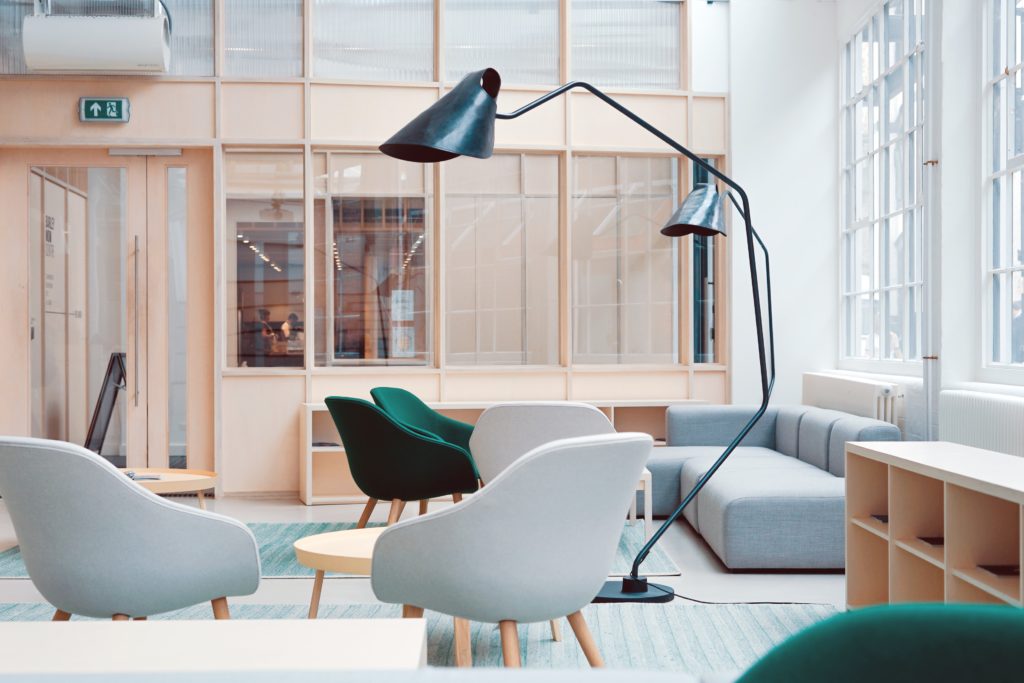First it was open-plan, next: shared office space and now all the hype is about remote work. The workplace has changed drastically in just a short period of time.
Take the phenomenon of shared office space that has doubled all over the world in just five years. Or look at Gallup’s recent workforce stats and you’ll be surprised to learn that 43% of the US workforce engaged in some type of work from home last year, which represents a 4% increase since 2012.
Start-ups and SMEs have been the main force behind this trend.
Millennials tend to make up a large proportion of their labour force. These businesses know that to attract the best and brightest talent, you need to make them feel comfortable and give them a workspace to be, well, bright, dynamic and engaging, whether that means installing a games room or allowing them to work remotely.
Employee engagement is paramount as the same Gallup report showed. They found that emotionally engaged employees are 20% more productive!
Today we present 5 ways to inject more flexibility into your office environment. But before jumping into the deep end, let’s take a quick look at 3 reasons why!

The Water Cooler Moment
Some of the biggest ideas have been hatched between coworkers in an office kitchen, around the coffee machine or around the classic water fountain.
Steve Jobs was a big believer in the water cooler moment. When designing Pixar’s HQ, he went to great lengths to ensure that the atrium and the bathrooms were positioned at locations that would maximise staff contact.
These mutual spaces are breeding grounds for synergies and cross-fertilisation where employees from all different levels and departments mingle and share ideas
It is therefore only natural that companies would want to expand these communal work areas and increase the all-important face-to-face interaction, making the odds for that Eureka moment only shorter.
Engaging Environment
As demonstrated earlier, a comfortable or engaged worker is more likely to be a productive worker. Studies also link comfort with job satisfaction, employee retention, absenteeism and general health.
Introducing flexibility into the physical landscape of the workspace gives your employee a sense of agency in their work life. They’re the ones dictating how and where they work best. That could mean working on a busy coworking desk, working from home or wherever proves to be most productive for the individual worker.
This also helps to keep the work environment fresh and dynamic.

Cost-effective
Your business is always shifting with the market and your stage of development. And so does your workspace.
An expansion in operations or change in business direction usually needs to be met with a change in office location, size and type. This is expensive, especially if you’re based in a big city.
Flexible workplaces, on the other hand, are dynamic in nature and therefore better placed to respond to any future shifts. Essentially, you get more out of what you’ve already got and for longer, saving you money. Cisco Systems, for example, saved 37% in rent by simply reshaping their floor plan to fit more staff in the same amount of area.
Alternatively, the easiest way to cut down on rent is to just expand your remote workforce.

5 steps to add more flexibility into your work environment
Demolishing barriers to collaboration
An open plan design is a no-brainer. But it also involves a big investment by either renovating or relocating. There are many other ways (and often cheaper) to achieve a more collaborative environment.
- Install large tables to create coworking spaces.
- Make equipment mobile. Chairs, desks, whiteboards, put them all on wheels and move the equipment to the activity – rather the other way round.
- Allow tables to be adjustable in height to give your employees’ backs some respite as well as encourage employee interaction.
Creativity hotspots
If you build it, they will come … and innovate. Look for ways to install little honey spots that will draw your employees together and hopefully bounce ideas off each other.
There are water coolers and coffee stations, of course! The tech world prefers table tennis and gaming rooms – for inspiration, check out MobilityWare’s recreation room in California, which features its own rock climbing wall. Or you could just make your kitchen a little more attractive with seating, nifty appliances or free snacks.

Repurpose space and equipment
Not all businesses are spoilt for space like Google and the like. Sometimes you just have to make do with what you already have.
Reclaim the conference room and turn it into an after-work lounge.
Turn your clunky filing cabinets into mobile chairs or tables by adding wheels and cushions. Flip the ping pong table into a coworking desk – and vice versa. Take your meetings outside.
You’d be surprised how many areas and pieces of equipment can be repurposed.
But don’t forget to leave a little room for quiet time
Coworking and brainstorming is fun and all, but sometimes employees need a bit of space for quiet contemplation or time to just knuckle down and finish that report.
So if you opt for an open-plan workplace, leave some capability to close up – just a little. Flexibility works both ways after all.
Portable and collapsible dividers are a great way to introduce privacy on demand. Small and removable dividers are perfect for large coworking tables.
Naves, recesses, pods, hammocks and quiet rooms will also do the job.

Go remote
With all that said and done, you probably can’t beat the remote workplace as a flexible workspace solution.
Essentially you can maintain a larger workforce without accommodating them in a large workspace. This is especially handy for start-ups or SMEs without the budget for large office space.
You could opt for a part remote, part shared-space solution where employees only come into the office for meetings or as per a roster, meaning you won’t need to sacrifice on face-to-face employee engagement.
Alternatively, you could leverage a bit of remote workforce technology, such as video or chat platforms, that helps by keeping remote employees connected.
And if you go for a full remote employee solution, you can always rent some coworking space, when you need it and how you need it.
There’s more to it
Changing your workplace or implementing remote work policies its just a first step in embracing flexibility. What’s next? Building up distributed teams that are able to perform despite the distance.
Check out Remote-how Academy to learn all the strategies, and tips you’ll need to fully prepare your workforce for remote work. It’s a comprehensive online program suitable for people with absolutely no previous remote experience.

